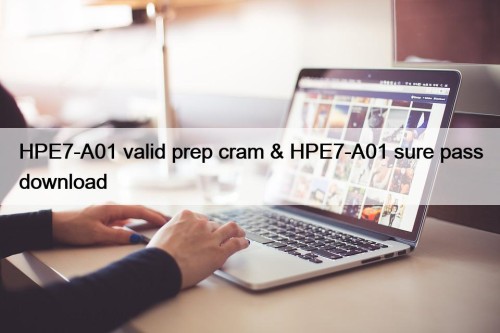Most Popular
 Free PDF Quiz 2025 Efficient PRMIA Exam Discount 8011 Voucher
Free PDF Quiz 2025 Efficient PRMIA Exam Discount 8011 Voucher
Do you always feel that your gains are not proportional ...
 New PSE-Strata Real Test - PSE-Strata Authorized Exam Dumps
New PSE-Strata Real Test - PSE-Strata Authorized Exam Dumps
DOWNLOAD the newest BraindumpsVCE PSE-Strata PDF dumps from Cloud Storage ...
 HPE7-A01 valid prep cram & HPE7-A01 sure pass download
HPE7-A01 valid prep cram & HPE7-A01 sure pass download
With so many years' development, we can keep stable high ...



Free PDF Quiz 2025 Efficient PRMIA Exam Discount 8011 Voucher

Do you always feel that your gains are not proportional to your efforts without valid 8011 study torrent? Do you feel that you always suffer from procrastination and cannot make full use of your sporadic time? If your answer is absolutely yes, then we would like to suggest you to try our 8011 Training Materials, which are high quality and efficiency 8011 test tools. Your success is 100% ensured to pass the 8011 exam and acquire the dreaming certification which will enable you to reach for more opportunities to higher incomes or better enterprises.
Successful completion of the PRMIA 8011: Credit and Counterparty Manager (CCRM) Certificate Exam validates the knowledge and skills of professionals in managing credit and counterparty risks, making them highly marketable in the financial sector. Credit and Counterparty Manager (CCRM) Certificate Exam certification program is highly regarded by employers who seek to hire top-rated professionals in credit and counterparty risk management. It is an opportunity for professionals to enhance their skills and knowledge in the field, making them highly competitive in the industry.
PRMIA 8011 Exam covers a wide range of topics related to credit and counterparty risk, including credit analysis, credit scoring, credit derivatives, collateral management, and counterparty risk mitigation techniques. 8011 exam is designed for professionals who work in areas such as credit risk management, corporate finance, treasury, and investment management. The CCRM Certificate is highly regarded in the industry and is recognized by leading financial institutions around the world.
>> Exam Discount 8011 Voucher <<
PRMIA 8011 Questions - Get Verified 8011 Dumps (2025)
You can try the free demo version of any 8011 exam dumps format before buying. For your satisfaction, PrepAwayTest gives you a free demo download facility. You can test the features and then place an order. So, these real and updated PRMIA 8011 Dumps are essential to pass the 8011 exam on the first try.
PRMIA Credit and Counterparty Manager (CCRM) Certificate Exam Sample Questions (Q15-Q20):
NEW QUESTION # 15
Which of the following statements are true:
I. Stress tests should consider simultaneous pressures in funding and asset markets, and the impact of a reduction in liquidity II. Judging the effectiveness of risk mitigation techniques is not a part of stress testing III. A reverse stress test is useful for discovering hidden vulnerabilities and inconsistencies in hedging strategies IV. Reputational risk, which is explicitly excluded from the definition of operational risk under Basel II, should still be considered as part of stress tests.
- A. All of the above
- B. I and III
- C. II and IV
- D. I, III and IV
Answer: D
Explanation:
All the statements in this question are directly based on the principles for effective stress testing as laid down in the BCBS document on stress testing issued in May 2009. Statement 1 is correct and is an almost verbatim reproduction of principle 10 as laid down in that document. Statement II is incorrect as it is contrary to principle 11 laid down in the same document. Statement III is correct as discovering hidden vulnerabilities and inconsistencies in hedging strategies is one of the objectives of reverse stress tests. Similarly, even though reputational risk is not really covered under any risk category under Basel II (as it is not a part of either market, credit or operational risk), principle 14of this paper requires the mitigation of spill-over effects on market confidence of reputational risk when thinking about stress tests.
Thus statements I, III and IV are correct and statement II is incorrect.
NEW QUESTION # 16
Which of the following statements are true:
I. A transition matrix is the probability of a security migrating from one rating class to another during its lifetime.
II. Marginal default probabilities refer to probabilities of default in a particular period, given survival at the beginning of that period.
III. Marginal default probabilities will always be greater than the corresponding cumulative default probability.
IV. Loss given default is generally greater when recovery rates are low.
- A. I and III
- B. I and IV
- C. I, III and IV
- D. II and IV
Answer: D
Explanation:
Statement I is incorrect. A transition matrix expresses the probabilities of moving to a given set of ratings at the end of a period (usually one year) conditional upon a given rating at the beginning of the period. It does not make a reference to an individual security and certainly not to the probability of migrating to other ratings during its entire lifetime.
Statement II is correct. Marginal default probabilities are the probability of default in a given year, conditional upon survival at the beginning of that year.
Statement III is incorrect. Cumulative probabilities of default will always be greater than the marginal probabilities of default - except in year 1 when they will be equal.
Statement IV is correct. LGD = 1 - Recovery Rate, therefore a low recovery rate implies higher LGD.
NEW QUESTION # 17
A bank expects the error rate in transaction data entry for a particular business process to be 0.005%. What is the range of expected errors in a day within +/- 2 standard deviations if there are 2,000,000 such transactions each day?
- A. 60 to 80 errors in a day
- B. 90 to 110 errors in a day
- C. 0 to 200 errors in a day
- D. 80 to 120 errors in a day
Answer: D
Explanation:
Error rates are generally modeled using the Poisson distribution. Recall that the Poisson distribution has only one parameter -#- which is its mean and also its variance.
In the given case, the mean number of errors is 2,000,000 x 0.005% = 100. Since this is the variance as well, the standard deviation is #100 = 10. Therefore the range of outcomes within 2 standard deviations of the mean is 100 +/- (2*10) = 80 to 120 errors in a day.
NEW QUESTION # 18
Which of the following statements is true in relation to collateral management?
I. A collateral management system need not consider the failure by counterparties to returncollateral when due II. The extent to which counterparties may have rehypothecated collateral is not a consideration for a collateral management system III. Cash is an acceptable substitute for any type of collateral required to be posted IV. Haircuts do not apply to treasury issued instruments posted as collateral
- A. I, II and III
- B. I, II, III and IV
- C. None of the statements is true
- D. II and III
Answer: C
Explanation:
Strong management of collateral, both receivable and payable, is emerging as an area requiring significant investment by financial institutions and asset managers in IT infrastructures and business processes. A bank needs to make collateral calls daily, based upon the P&L of the previous day, and likewise receives collateral calls from its counterparties. Just like cash, a bank needs to make sure that it does not run out of collateral to post when a call is received. Interestingly, based upon the agreements between banks and their mutual understanding, only certain types of instruments often qualify as valid collateral - and in such cases even cash is not acceptable if the right type of bond or other agreed security is not available to post. The operational challenges of managing collateral increase manifold due to 'rehypothecation', ie when collateral received from one counterparty gets posted out as collateral where it is due. In such cases, the bank should have the mechanisms to receive the right assets back in a timely way in case rehypothecated assets are to be returned.
The systems should be able to deal with delays, failures without impacting the ability of the bank to post collateral as needed. All of this requires major investments in IT and processes.
Statement I is not true as a bank is bound to post collateral to third parties when needed regardless of the failure of its counterparties to post collateral to it when owed. In the markets, failures by counterparties can and do happen, and a collateral management system needs to account for and keep a buffer for the fact that some collateral when due will not be received.
Statement II is not true as rehypothecation by counterparties of collateral posted increases the chances of the collateral not being received in time. The system should consider the need for liquidity to generate assets that can be posted as collateral when others have failed to return the collateral in a timely way.
Statement III is not correct as cash may not be acceptable to counterparties as collateral. From a practical point of view, they may not have the infrastructure to receive and account for cash as collateral. A Swiss bank, for example, may have an 'account' to receive US t-bills as collateral but may not even have a US dollar account to receive cash. Even if it did, the volumes of transactions going back and forth may make tracking and reconciliations impossible. Thus a bank should always make sure that it has the right type of collateral available to post.
Statement IV is incorrect as well, as treasury issued instruments are also subject to haircuts. Their value also fluctuates in response to changes in yields, and therefore they are subject to haircuts as well.
Thus none of the statements are correct and Choice 'd' is the correct answer.
NEW QUESTION # 19
Which of the following statements are true:
I. Credit risk and counterparty risk are synonymous
II. Counterparty risk is the contingent risk from a counterparty's default in derivative transactions III. Counterparty risk is the risk of a loan default or the risk from moneys lent directly IV. The exposure at default is difficult to estimate for credit risk as it depends upon market movements
- A. II
- B. I and II
- C. II and III
- D. III and IV
Answer: A
Explanation:
Credit risk is the risk from a borrower defaulting on moneys lent. Counterparty risk, on the other hand, is the risk that a counterparty to a derivative transaction will be unable to pay at the time the transaction is in-the- money.
Credit risk therefore relates more to the banking book, counterparty risk relates more to the trading book.
Credit risk and counterparty risk differ in that for counterparty risk, the amount at risk fluctuates for counterparty risk depending upon the value of the underlying derivative. Counterparty risk generally starts at zero, for most swaps and other derivatives are near zero value at inception. Over time, as the prices of the underlying instruments move, one party ends up owing money to the other. A deterioration in the financial situation of the party owing moneys may lead to a loss to the other party, resulting in counterparty risk.
Counterparty risk can also arise from stock lending operations and repo trades.
Credit risk on the other hand is the traditional risk of default by a borrower, or a bank's customer who has taken a loan or has an overdraft or other credit facility.
Statement I is therefore incorrect as credit risk and counterparty risks are different.
Statement II is correct as counterparty risk is 'contingent' in the sense it arises only if the transaction with the counterparty ends up being in-the-money, and the counterparty defaults.
Statement III is incorrect. The statement describes credit risk.
Statement IV is incorrect, as the exposure is known for moneys lent. Derivative exposures for the future are difficult to estimate, they can even turn from moneys owed to moneys due as the value of the underlying changes.
NEW QUESTION # 20
......
The PRMIA 8011 practice exam material is available in three different formats i.e PRMIA 8011 dumps PDF format, web-based practice test software, and desktop 8011 practice exam software. PDF format is pretty much easy to use for the ones who always have their smart devices and love to prepare for 8011 Exam from them. Applicants can also make notes of printed Credit and Counterparty Manager (CCRM) Certificate Exam (8011) exam material so they can use it anywhere in order to pass PRMIA 8011 Certification with a good score.
Relevant 8011 Answers: https://www.prepawaytest.com/PRMIA/8011-practice-exam-dumps.html
- Reliable 8011 Test Online 🔪 8011 Valid Braindumps Pdf 🥗 8011 Exam Registration ⏬ Search on ▶ www.examdiscuss.com ◀ for ▛ 8011 ▟ to obtain exam materials for free download 🥜Exam 8011 Course
- Reliable 8011 Test Online 🕉 New 8011 Test Syllabus 🔂 8011 Certification Exam Cost 😬 Download ➽ 8011 🢪 for free by simply entering ( www.pdfvce.com ) website 🔌Certification 8011 Sample Questions
- Test 8011 Sample Questions 🧙 Exam 8011 Course 🥠 8011 Exam Registration 🍾 Open ⏩ www.getvalidtest.com ⏪ and search for ➽ 8011 🢪 to download exam materials for free 🌗Test 8011 Sample Questions
- TOP Exam Discount 8011 Voucher - PRMIA Credit and Counterparty Manager (CCRM) Certificate Exam - High-quality Relevant 8011 Answers 🍝 Search for 《 8011 》 and download exam materials for free through { www.pdfvce.com } 📙8011 Certification Exam Cost
- 100% Pass Quiz PRMIA - 8011 - Authoritative Exam Discount Credit and Counterparty Manager (CCRM) Certificate Exam Voucher 📏 Download 【 8011 】 for free by simply entering ➤ www.testsimulate.com ⮘ website 🚼8011 Reliable Exam Sample
- 100% Pass Quiz 2025 PRMIA 8011: Trustable Exam Discount Credit and Counterparty Manager (CCRM) Certificate Exam Voucher 🧣 Copy URL { www.pdfvce.com } open and search for ✔ 8011 ️✔️ to download for free ↩8011 Sample Questions Pdf
- TOP Exam Discount 8011 Voucher - PRMIA Credit and Counterparty Manager (CCRM) Certificate Exam - High-quality Relevant 8011 Answers 🥘 ➥ www.torrentvce.com 🡄 is best website to obtain ➥ 8011 🡄 for free download 🥣8011 Reliable Exam Preparation
- Test 8011 Dumps Free 📍 8011 Reliable Exam Preparation 💎 8011 Valid Test Cram 🧴 Download “ 8011 ” for free by simply entering [ www.pdfvce.com ] website 🦟Test 8011 Sample Questions
- New 8011 Test Syllabus 🐯 8011 Reliable Exam Sample 📟 Certification 8011 Sample Questions 🍗 Search for ( 8011 ) and easily obtain a free download on “ www.prep4pass.com ” ✴8011 Valid Test Cram
- 100% Pass PRMIA 8011 Marvelous Exam Discount Voucher 🐙 Search for ✔ 8011 ️✔️ and download it for free on ▷ www.pdfvce.com ◁ website 🐘Exam 8011 Course
- TOP Exam Discount 8011 Voucher - PRMIA Credit and Counterparty Manager (CCRM) Certificate Exam - High-quality Relevant 8011 Answers 🥯 Open website “ www.examcollectionpass.com ” and search for “ 8011 ” for free download 📴Reliable 8011 Test Online
- 8011 Exam Questions
- www.jygame8.com www.xx611.com a.lamianyc.com rdcvw.q711.myverydz.cn lineage95003.官網.com iban天堂.官網.com zimeng.zfk123.xyz 5000n-01.duckart.pro 戰魂天堂.官網.com bajie.sbs
Tags: Exam Discount 8011 Voucher, Relevant 8011 Answers, 8011 Pass4sure, New 8011 Test Materials, Reliable 8011 Exam Simulator